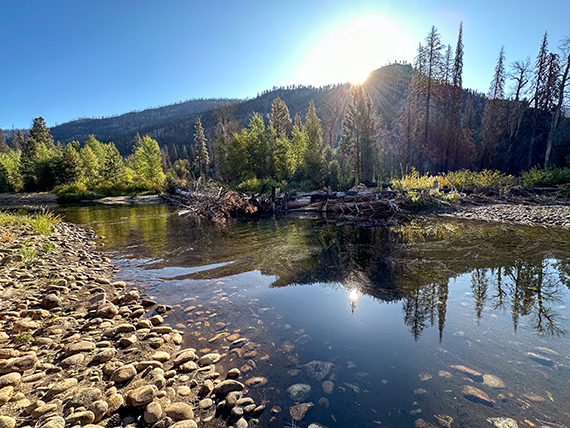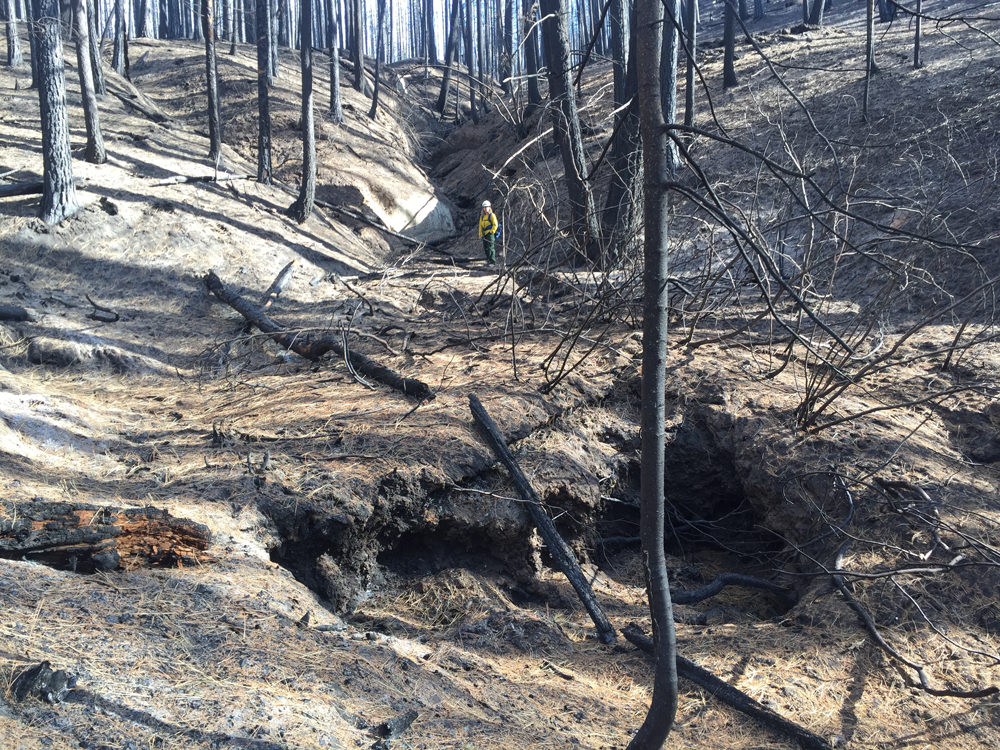Post-Fire Recovery Program
Established in 2021, The Washington State Department of Natural Resources Post Fire Recovery Program works at all levels of the disaster recovery cycle. The program operates within the Forest Resilience Division at DNR, with an overarching goal of helping communities and watersheds recover from wildfires increasing in size, severity, and long-term impacts felt across Washington.
Post-Fire Recovery relies heavily on cross-programmatic, cross-boundary coordination. Program staff aim to provide expertise and coordination on post-fire recovery efforts from an all-lands perspective, and with a focus on forest resilience.

The DNR Post-Fire Recovery Program works with partners to restore aquatic and beaver habitats in burned areas like the one pictured above. (Jessa Lewis/DNR)
The Post-Fire Recovery Program is a key part of DNR’s implementation of the 10-Year Wildland Fire Strategic Plan, 20-Year Forest Health Strategic Plan, and Forest Action Plan. Program funding is provided by the Wildfire Response, forest Restoration and Community Resilience account created in 2021 by the Washington Legislature.
Funding is intended to support post-fire recovery activities that stabilize and prevent unacceptable degradation to natural and cultural resources and minimize threats to life and property resulting from the effects of a wildfire, as well as and long-term efforts to increase the resilience of the landscape and communities against future disturbance.
The program is poised to invest more than $1 million to improve communications tools, facilitate a coordinated, statewide post-fire recovery network, invest in communities to mitigate fire impacts, support post-fire training of natural resource workforce, and support long-term recovery efforts.

An example of post-wildfire debris flow. (DNR File Photo)
Specific Program Actions
- Preparing for the inevitability of fire by providing communities and landscapes with the best available science and tools to prepare watersheds and neighborhoods for fire. By putting as much proactive work on the ground as possible, we can build community resilience and reduce the risk of a wildfire becoming catastrophic.
- Working with land managers and community leaders during a fire to help navigate the complexities of an ongoing wildfire response concurrent with recovery efforts post-fire. This is a critical transition point where high-capacity fire suppression teams can and do support local communities.
- Finding creative ways to jumpstart recovery efforts that ensure landowners, communities, and ecosystems are on the right paths to rebuilding or reinforcing resilient ecosystems in the face of a warming climate. There are no simple answers, but examples include replanting and reseeding for native species, restoring fish habitat, and installing beaver dam analogs. These and many other post-fire activities can help break the cycle of degradation that can follow a wildfire.
- Developing long-term recovery strategies by using adaptive management strategies and available science to inform land management strategies from the local level to entire watersheds. DNR supports landscape-scale planning and strategic prioritization for specific landscapes. We use these tools to help determine adaptation and resilience strategies following high-severity wildfires in Washington.
- Coordinating across boundaries and jurisdictions. Fire doesn’t respect fences or property lines. Post-fire impacts often extend far beyond the fire perimeter. The cross-boundary nature of recovery means we must engage with partners at the local, state, Tribal, and federal levels, as well as with nonprofits and private organizations. We support a holistic approach to post-fire recovery work in conjunction with other forest health and restoration efforts.
Determine What Resources are Available to You
If you have been impacted by a wildfire in the past three years, reach out to your local DNR forestry staff using the Find Your Forester tool. We can visit your property, provide advice, and discuss recovery options. Click here if your property was impacted by the Gray Fire. Click here if your property was impacted by the Oregon Road Fire.

